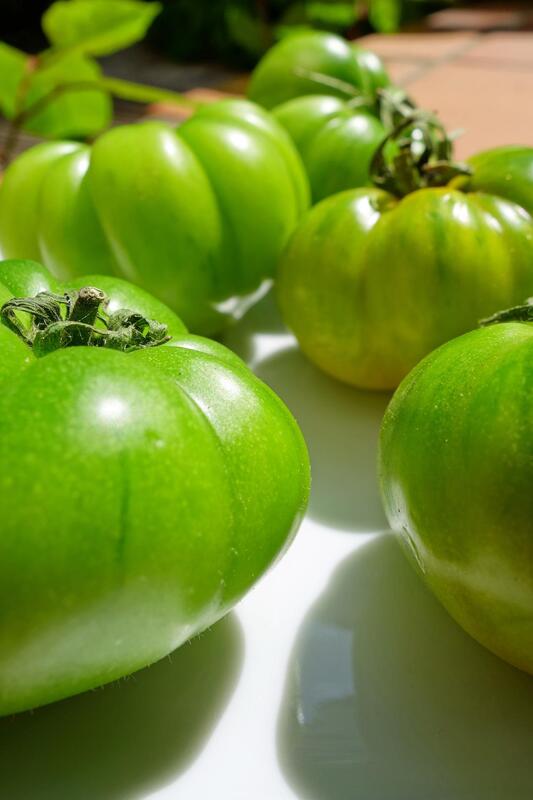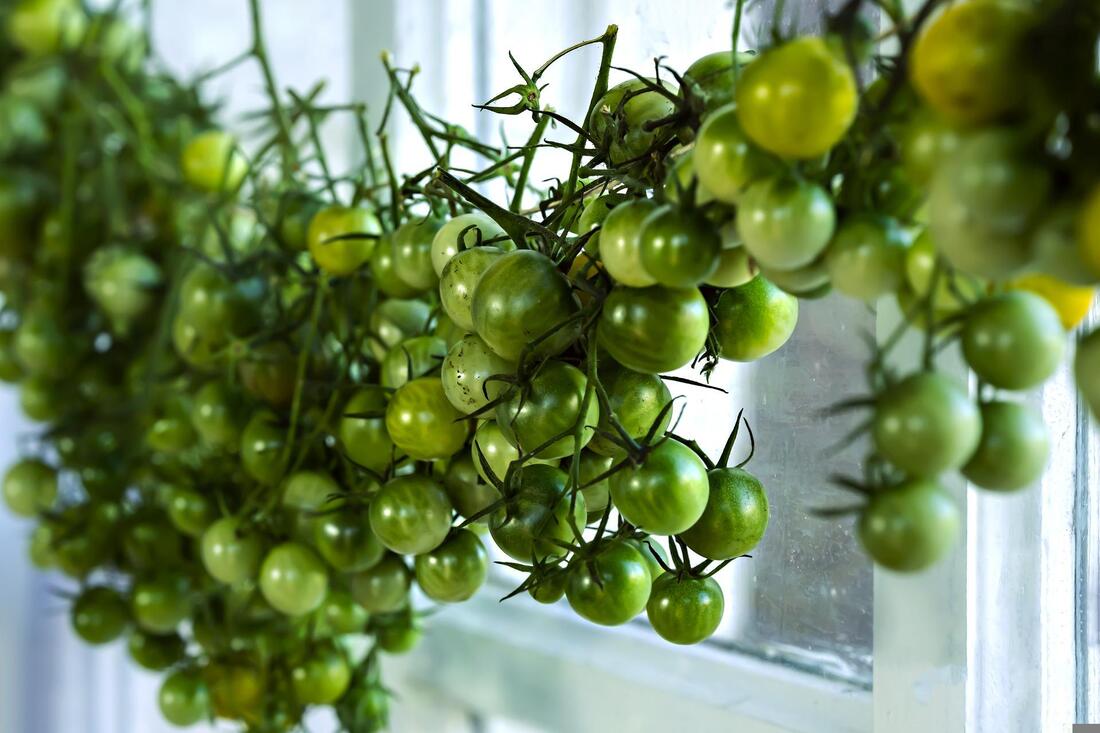How to Ripen Green Tomatoes
Growing vine-ripe tomatoes in a northern garden can be a challenge particularly when Mother Nature hands us a cool summer. But, that doesn't mean you can't enjoy red, juicy tomatoes from your garden. It simply means you will need to provide a little extra TLC and exercise a little patience.
The first step to harvesting vine-ripe tomatoes in the garden is to choose varieties that mature early and thrive in cool weather. But if your tomatoes take longer to mature or Mother Nature doesn't cooperate and you still have tons of green tomatoes at the end of summer, you have three choices.
Methods of Ripening Green Tomatoes
Root Pruning
Root pruning often speeds ripening in the garden. According to Cornell University, severing some of the roots hastens ripening. Cornell recommends inserting a spade into the soil to sever the roots approximately 12 inches from the main stem forming a circle around the plant. Some prefer to sever the roots 6 inches from the stem on one side only. A local gardener swears by giving the entire plant a sharp pull to loosen the roots in the soil. If you choose root pruning do so several weeks before the expected frost to allow all tomatoes to fully ripen.
Hanging
Some prefer to trim back the foliage and pull the tomato plant with the tomatoes intact and hang the entire plant upside down in a cool area to ripen. For small tomato plants, or if you have one or two plants, this may work well, but it really isn't practical for large plants or if you have a lot of tomato plants.
Cherry tomatoes like those above can be hung by clipping the clusters from the vine.
Cherry tomatoes like those above can be hung by clipping the clusters from the vine.
Inside Ripening
Because green tomatoes will continue to ripen when brought inside, many gardeners choose this method.. A few tomatoes can be ripened in a paper bag (or even by placing them on a sunny windowsill), but for large quantities of green tomatoes, a box works better. Here's how.
Tomatoes begin ripening within a week, but some may take up to a month. If you are lucky, your supply of ripe tomatoes may extend well into fall. Although vine-ripe tomatoes may be the goal, ripening green tomatoes inside does provide fresh tomatoes long after the frost has arrived. Anything that extends my gardening season into the fall is appreciated.
- Pick the tomatoes on a dry day. Wipe them down with a paper towel or soft cloth. Moisture or soil from the garden on the tomatoes promotes spoilage.
- Wrap each tomato in newspaper and layer them in a box. Because they are individually wrapped, you can layer them on top of each other without concerns about rotting, but you do need to check them often. Some gardeners spread the green tomatoes over a layer of newspaper and then cover them with another layer.
- Close the box and place it in a cool, dark area to allow the tomatoes to ripen. Check your box often to check for any signs of rotting and to remove ripe tomatoes.
Tomatoes begin ripening within a week, but some may take up to a month. If you are lucky, your supply of ripe tomatoes may extend well into fall. Although vine-ripe tomatoes may be the goal, ripening green tomatoes inside does provide fresh tomatoes long after the frost has arrived. Anything that extends my gardening season into the fall is appreciated.

